
Apple MacBook Pro PowerBook Newton QuickTake Lombard/Wall Street woes
|
.
.
.
.
.
.
.
.
.
.
.
.
.
.
.
.
.
.
.
.
.
.
.
.
.
.
.
.
.
.
.
.
.
.
.
.
.
.
.
.
.
.
|
PowerBook
Here is my ode to the almighty PowerBook, my computing hardware of choice since the line of Macintosh laptop line was created in 1991. There's also a story of what things were like before the PowerBooks descended from heaven (or Cupertino).
| PowerBook 170 / Codename: Road Warrior - 21 October 1991 |
 I don't remember exactly how it came to pass that every desk-bound Macintosh in my house (and at that time I believe I had three or four of them, each a different model, networked together) dissapeared in a matter of months, to be replaced by a Macintosh PowerBook 170. But that's what happened, and I've never looked back. Being able to take my computing with me made my working hours much more productive. It also allowed me to leave the confines of my home office or my clients' offices and work in cafés or in Golden Gate Park.
I don't remember exactly how it came to pass that every desk-bound Macintosh in my house (and at that time I believe I had three or four of them, each a different model, networked together) dissapeared in a matter of months, to be replaced by a Macintosh PowerBook 170. But that's what happened, and I've never looked back. Being able to take my computing with me made my working hours much more productive. It also allowed me to leave the confines of my home office or my clients' offices and work in cafés or in Golden Gate Park.
|
| PowerBook 520c / Codename: Blackbird - 16 May 1991 |
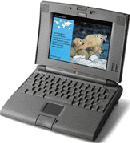 The 170 was replaced by a client's 180, which lasted only a few months. When the "Blackbird" line of PowerBooks was released I purchased my first color Macintosh, the Motorola 68LC040-based 520c. Up to that point I'd been doing with all sorts of greyscale, from laptop screens to large external monitors. I never missed color because I never experienced it. (It strikes me as funny that even though I'd used huge high-quality color monitors with UNIX machines running the X Window System, the color never seemed to add much value.) But somehow color added vibrancy to Macintosh. The 520c was being used around the clock, for book-writing, for programming (robust development systems having finally arrived), and for doing all my client work. I added RAM and upgraded to the largest internal hard drive available at the time. It was a workhorse machine.
The 170 was replaced by a client's 180, which lasted only a few months. When the "Blackbird" line of PowerBooks was released I purchased my first color Macintosh, the Motorola 68LC040-based 520c. Up to that point I'd been doing with all sorts of greyscale, from laptop screens to large external monitors. I never missed color because I never experienced it. (It strikes me as funny that even though I'd used huge high-quality color monitors with UNIX machines running the X Window System, the color never seemed to add much value.) But somehow color added vibrancy to Macintosh. The 520c was being used around the clock, for book-writing, for programming (robust development systems having finally arrived), and for doing all my client work. I added RAM and upgraded to the largest internal hard drive available at the time. It was a workhorse machine.
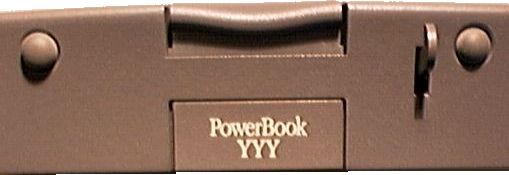
My happiness with the 520c was marred only by one ugly lie from Apple marketing: the pending arrival of the PowerPC upgrade daughterboard. It was shown at the San Francisco MacWorld Exposition (in January 1995) inside the "YYY" PowerBooks, and verbally promised for delivery in a few months. But it wasn't to arrive for almost a year later. The problem wasn't the slipping ship date, nor even it's premature promised delivery date, but that Apple never publicly said what the cause of the delays was; whether it was redesigning the board with a later, greater PowerPC, or if someone had misplaced the plans, or even if the product had quietly been dropped. As seems to be Apple's modus operandi, it burns down the enthusiasm of owners and developers alike, only to have to rebuild it with the next cool product release. Seems like a lot of extra work to me.
 My 520c survived until just before my Eivissa and Gran Canaria trip. The PowerPC PowerBook 5300 was to be released and my 520c to be passed on to my uncle in Eivissa. Of course Apple's announced release date was weeks premature, and a major engineering setback and PR disaster didn't help the situation. The first laptop to use the new lithium-ion rechargable batteries, the 5300 was shipped with Nickel-Metal Hydride cells after two of the Sony-made Li-Ion batteries in Apple development prototypes caught fire. The switchover caused long shipping delays and was a major embarrassment. (We all make mistakes, but that one isn't going to look good on a résumé. :-)
My 520c survived until just before my Eivissa and Gran Canaria trip. The PowerPC PowerBook 5300 was to be released and my 520c to be passed on to my uncle in Eivissa. Of course Apple's announced release date was weeks premature, and a major engineering setback and PR disaster didn't help the situation. The first laptop to use the new lithium-ion rechargable batteries, the 5300 was shipped with Nickel-Metal Hydride cells after two of the Sony-made Li-Ion batteries in Apple development prototypes caught fire. The switchover caused long shipping delays and was a major embarrassment. (We all make mistakes, but that one isn't going to look good on a résumé. :-)
During my ill-fated trip, during which the 520c got zapped by Eivissa's poor excuse for electrical power, I had a friendly shop in San Francisco ship me a rental PowerBook 150 (the one at left, on the table of the Deutsche Gasthaus Atlantis) until the trip was over. (In the interim I wrote chapters of my book on a transparent Newton.) I'm writing this a week before the trip is over. The same shop emailed me last week to say my 5300c/100 has arrived and is waiting for me. I'll write the next section of this web page when I have that, the latest PowerBook model, in my hot little hands.
|
| PowerBook 5300c / Codename: M2 - 28 August 1995 |
 It was late in the autumn of 1995 when I returned from my trip with tattered PowerBook 150 in hand. The 5300 had been shipped, as requested, to my Dad's house on the east coast (where it was left out in the open on my father's front stoop). It's hardly as sexy as the curvy 520c, but it's faster, and that counts for a lot. The 500 MB drive has room to spare. Nice.
It was late in the autumn of 1995 when I returned from my trip with tattered PowerBook 150 in hand. The 5300 had been shipped, as requested, to my Dad's house on the east coast (where it was left out in the open on my father's front stoop). It's hardly as sexy as the curvy 520c, but it's faster, and that counts for a lot. The 500 MB drive has room to spare. Nice.
Of course, the 5300 was perhaps the most obviously buggy hardware ever shipped by Apple. Especially vexing is the AC power adapter, which sticks far out of the back of the laptop, waiting to act as a lever to wiggle the female connector loose from the logic board and crack the female connector. It's happened twice to me in these last few months. Damn! Doesn't anybody at Apple actually use these things?
Even worse, the unit has extremely flimsy monitor screen hinges, causing the bezel to crack and separate, pulling the video ribbon cable tight and wiggling the connection loose, resulting in intermittent (or no) video output. Sheesh, it's not like it takes a rocket scientist to figure out that a laptop will be opened and closed from time to time. Boneheads. This has been one long inconvenience, shipping my 5300 back four times in five months. Hardly worth the effort.
The problems of this engineering nightmare were so widespread that the outcry forced Apple to issue an extended 7-year warranty on these flaws. Ever heard of such a thing?
|
| PowerBook G3 / Codename: Wallstreet & Lombard - 6 May 1998 & 10 May 1999 |
Which 'PowerBook G3'?
Using the same moniker is no help at all, Apple, so G3PB owners use the project code names to be unambiguous: Wallstreet (1998), Lombard (1999 - Bronze Keyboard), and Pismo (2000 - FireWire). |
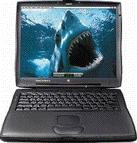 The next PowerBooks that entered my life were the Wallstreet), left, and Lombard, below right, G3 PowerBooks. Using the PowerPC 750 (aka G3) chip, these 300- and 400-MHz (respectively) PowerBooks are the first to rival desktop machines, what with their speedy CPUs and 14.1-inch active matrix screens. The latter even sports a CD/DVD player.
The next PowerBooks that entered my life were the Wallstreet), left, and Lombard, below right, G3 PowerBooks. Using the PowerPC 750 (aka G3) chip, these 300- and 400-MHz (respectively) PowerBooks are the first to rival desktop machines, what with their speedy CPUs and 14.1-inch active matrix screens. The latter even sports a CD/DVD player.
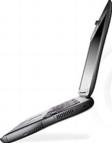 These fast, portable machines, when coupled with the Digital Subscriber Line (DSL) connection to our house, make for a wonderful work-at-home environment. I have "Linux" running on the Wallstreet. Solaris 7 is on the SPARCstation 2, also connected to the Ethernet hub in the bedroom. We're an Intel-free zone; what if it absolutely has to be Microsoft Windows 95, 98, or NT? Connectix Virtual PC does the trick, down to the little sheep which toddle across the screen.
These fast, portable machines, when coupled with the Digital Subscriber Line (DSL) connection to our house, make for a wonderful work-at-home environment. I have "Linux" running on the Wallstreet. Solaris 7 is on the SPARCstation 2, also connected to the Ethernet hub in the bedroom. We're an Intel-free zone; what if it absolutely has to be Microsoft Windows 95, 98, or NT? Connectix Virtual PC does the trick, down to the little sheep which toddle across the screen.
| Juggling Wall Street, Lombard, and Pismo - March 2001 | |
Apple "Mac OS X" 1.0 is scheduled to be released about two weeks from now. In preparation, I sent out for some Chinese food and RAM. It's possible to put 1 gigabyte of random access memory into the high-end PowerBooks, but the cost is prohibitive. I purchased three 256 megabyte SO DIMM at $81 each. Two of them went into my Pismo, resulting in a half-gig of RAM in my workhorse machine. Another one, plus a 64 MB module I'd been using went into my Lombard. And since Dad was visiting, along with the Wallstreet I'd passed on to him, I moved the stock modules into his machine. It was the strangest conga line you've ever seen: three similar PowerBooks perched on my dishwasher, opened up, guts visible, and some with hard drive hanging from ribbon cables.
Right. That reminds me. I put the stock 10 MB hard drive into the Lombard and the 20 MB IBM TravelStar drive into the Pismo. Now we're ready to go. Say goodbye, Mac OS 9.
|
| Eschewing the Titanium PowerBook G4 - January 2000 | |
Despite Steve Jobs' excellent presentation at MacWorld Expo San Francisco, I'm opting not to purchase the first release of the Apple Titanium PowerBook G4, the TiPB. Why? Despite it's wider screen, lighter weight, newer CPU, and good looks, it doesn't seem enough of an upwards jump for the money.
 |
The PowerPC G4 chip is mostly a G3 with a Velocity Engine (a vector processor), of which almost none of the software I use will take advantage. We've been promised that Mac OS X and Adobe PhotoShop will, but the former won't use it much, and the latter accounts for only a tiny percentage of my computer usage. A comparison of the new 400 and 500 MHz TiPB models against my current 400 MHz Pismo and 333 MHz Lombard models leads me to conclude that I'd be paying for the bitchin' styling, a screen that's an extra 128 pixels wider than my current one, and about double the battery life.
|
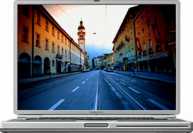 |
|
 |
It's not that I don't want one of these beauties, just that I can't financially justify buying one right now. When the next revision is released, perhaps with a speed bump and another pound or two less onboard (as has been reported in the press), then we'll see.
|
| PowerBook G3 / Codename: Pismo - Autumn 2000 | |
I'm writing this on a G3 PowerBook 2000 (Pismo), the rear view of which is shown below. FireWire is added; SCSI removed. An evolutionary process, but I was hoping for revolutionary. Still 400 MHz (because the 500 MHz model is too pricey). I've been adding a few FireWire devices (and in fact had recently bought a Ratoc FireWire PCMCIA card) so things are looking good and fast(er).

|
| PowerBook G4 DVI 800 MHz / Codename: Ivory - Summer 2002 | |
As I mentioned above, the first Titanium PowerBooks had been around since January 2001, but with only a modest speed gain over my Pismo, so I passed on the premium price. (This is usually how I spend my own money; I rarely have a desperate need to pay for the bleeding edge of progress.) In October 2001 the PowerBook G4 (Gigabit Ethernet) / Codename: Onyx, a speed-bump, arrived, but my Pismo didn't seem all used up, so I passed on that one too. I knew sooner or later we'd see a real jump in speed...

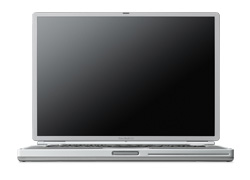 The recently-released PowerBook G4 (DVI), now at 800 MHz, is here. This is the computer for which I was lusting. The native 1280 by 854 resolution of the incredibly bright 15.2-inch screen alone is a thrill (compared to this white-blue screen the sickly yellow of my Pismo is depressing), but the speedy 6-gigaflop processor makes working a lot more fun. I haven't yet used the built-in Airport card, but in a short time I ought to be within range of the San Francisco Wireless Broadband project. The ATI Mobility Radeon 7500 graphics processor with 32MB of DDR video memory is nice for gaming right now, but as the Mac OS X "Jaguar" release comes, and the Quartz Extreme code will make the entire desktop a fully accelerated OpenGL scene, it'll take over rendering from the CPU. The whole Macintosh interface will become a first-person game :-)
The recently-released PowerBook G4 (DVI), now at 800 MHz, is here. This is the computer for which I was lusting. The native 1280 by 854 resolution of the incredibly bright 15.2-inch screen alone is a thrill (compared to this white-blue screen the sickly yellow of my Pismo is depressing), but the speedy 6-gigaflop processor makes working a lot more fun. I haven't yet used the built-in Airport card, but in a short time I ought to be within range of the San Francisco Wireless Broadband project. The ATI Mobility Radeon 7500 graphics processor with 32MB of DDR video memory is nice for gaming right now, but as the Mac OS X "Jaguar" release comes, and the Quartz Extreme code will make the entire desktop a fully accelerated OpenGL scene, it'll take over rendering from the CPU. The whole Macintosh interface will become a first-person game :-)
As I've done several times before, especially when it seems as though the advance of progress is slow, I buy AppleCare before my initial warranty expires. That's me betting that something will go wrong before another compelling PowerBook release will come to pass.
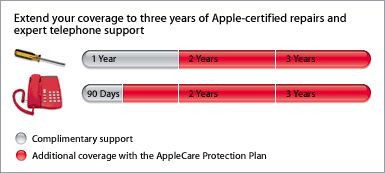
Actually I've had pretty good luck with my PowerBooks, and rarely had to use the warranty, but even once more than pays for AppleCare.
|
| PowerBook G4 12-inch / Codename: Thresher - Autumn 2004 | |
Umm, that last sentence is no longer operative.
My luck with my 800 MHz TiPB seems to have run out. In October intermittent inability to see the internal hard disk became the norm. Then complete failure. Luckily I have daily backups and an external hard disk from which to book and continue working.
The nice folks at Apple work on it, returning it in three days, having replaced the stock 40 GB drive with an 80 GB model and replacing all the worn titanium skins. Thanks, Apple!
A month later, in late November, the same thing happens. Luckily I have those backups and external drives. Even better, an old friend passes along a 12-inch PowerBook G4 for me to do work on his not-for-profit venture.

It's a very amusing trade-off, size for portability. The 12-inch seems much more portable, even with a full-size keyboard. If I'd started with this computer I'd not notice the lack of real-estate, but being used to a 15-inch widescreen it is a bit shocking. But not unpleasant.
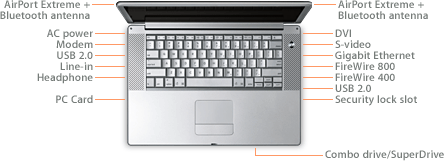
And because the PowerBooks have a full complement of ports my work goes on. I can hardly wait to see what's going to happen with the repairs on the 15-inch. AppleCare warrants that machine until August 2005.
Update: the repairs are done quickly, the *third* hard drive seems to be working, the skins look great, and the machine flies along. The 12-inch has been returned from whence it was borrowed.
|
| PowerBook G4 15-inch 1.5 GHz / Codename: Q16A - 4 July 2005 |
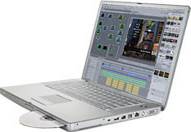 My rules on purchasing computing hardware goes something like this:
My rules on purchasing computing hardware goes something like this:
- never buy the first two revisions of anything, let someone else pay for the privilege of beating out the bugs
- you next computer ought to be twice as fast as your current model
My wife, Rose, has started using the TiPB recently to watch movies - thanks, NetFlix - and so I'm in the market for a machine to hold me over past the first few revisions of the Intel-based PowerBooks. Today I found a next-to-latest model, refurbished, at the Apple Store. The seriously discounted price on that machine, plus the educational discount (for PTA officers) on the AppleCare, did the trick.
[Update: Almost twenty months after getting the PowerBook G4, which is a workhorse, I migrate to the Intel-powered MacBook Pro.]
|
|
Most of the photos on this page belong to Apple Computer; used without permission (but with gratitude :-).
|
 subscribe
subscribe
 subscribe
subscribe
